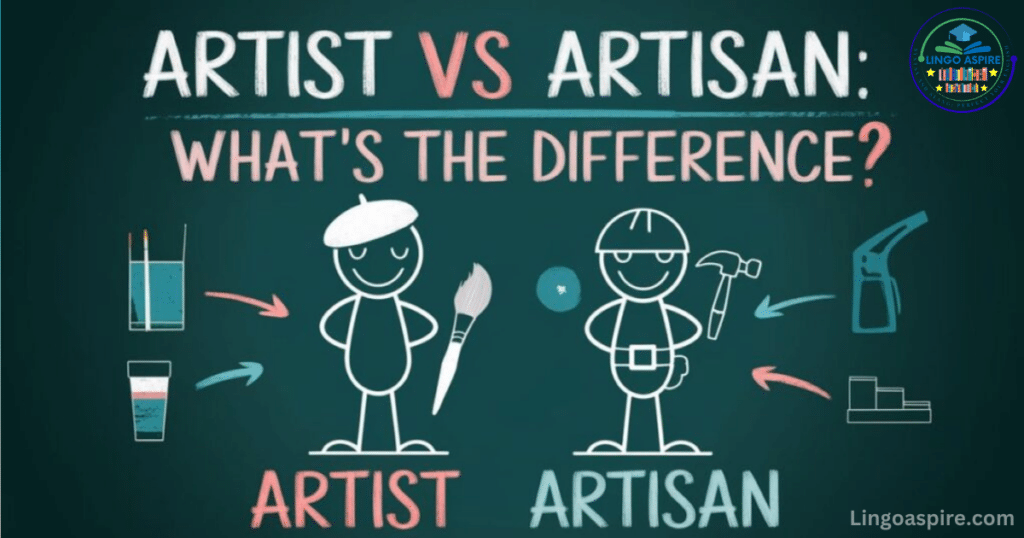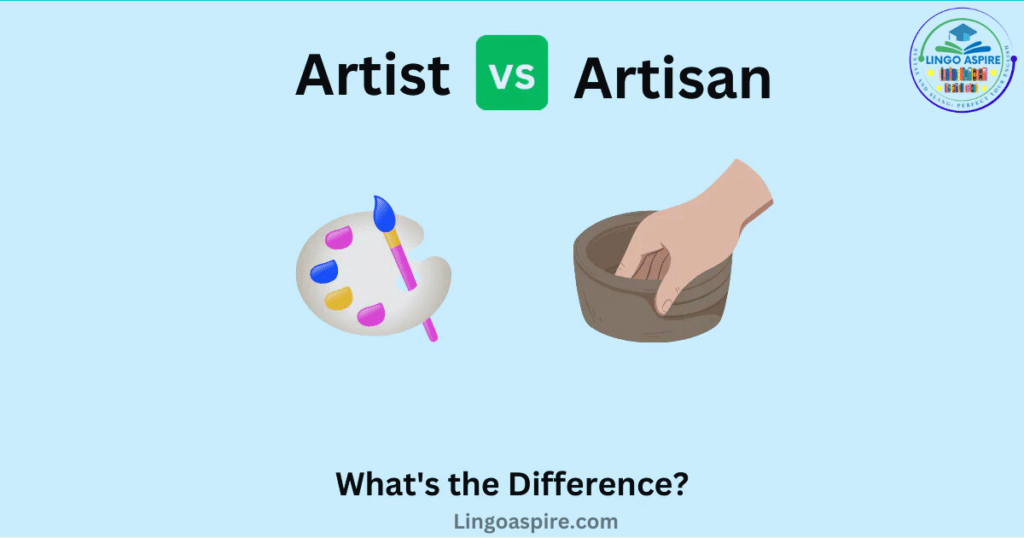In the realm of creation, the terms artist and artisan often surface, sparking discussions about their meanings, roles, and impacts. While both artists and artisans shape our visual and practical worlds, understanding their differences and intersections is not just about semantics—it’s about appreciating the depth of human creativity. This blog post delves into the nuances between artists and artisans, exploring their histories, processes, and the unique marks they leave on society.
Defining the Terms: Artist and Artisan
An artist is a person who engages in the fine arts, such as painting, sculpture, or music, driven by a creative soul and an artistic vision. Artists express their emotions and viewpoints through works of art that may not necessarily serve a functional purpose but instead aim to provoke thought, convey emotions, or offer aesthetic pleasure. On the other hand, an artisan specializes in skilled craftsmanship, creating functional objects like furniture, pottery, and jewelry. These craftsmen and women use their traditional skills to produce items that are as much about utility as they are about beauty.
Differences between artists and artisans

- Purpose and Intent:
- Artists are primarily driven by artistic expression and the desire to convey personal or universal themes through their work. Their creations are intended to evoke emotional responses, provoke thought, or challenge societal norms.
- On the other hand, artisans focus on producing functional objects that serve practical purposes. Their work is meant to be used daily, combining utility with aesthetic appeal.
- Nature of Work:
- An artist’s work is often considered a form of artistic creativity, where the outcome is a unique piece that reflects the individual’s artistic vision and personal touch. Each piece is original and can be interpreted in multiple ways by its audience.
- Artisans produce items that often require skilled craftsmanship and adherence to traditional methods. The end products, while beautiful, are typically more standardized than those of artists and are crafted to meet specific functional criteria.
- Materials and Techniques:
- Artists may experiment with a wide range of materials and techniques, choosing them based on how they might enhance the artistic concepts they wish to explore. This can include everything from traditional paints to modern digital mediums.
- Artisans use materials that are best suited for the end-use of their products, such as wood, metal, and ceramics. Their choices are influenced by the durability, functionality, and sometimes the traditions of the craft they practice.
- Training and Skills:
- Artists often pursue formal education in fields of the fine arts to develop their skills and refine their artistic perspectives. However, many are self-taught, relying on their exploration of different mediums and styles.
- Artisans usually undergo specific training focused on mastering the techniques necessary for their craft. This often includes apprenticeships or learning directly from skilled craftsmen and women, emphasizing the mastery of established methods.
Historical Evolution: Artists and Artisans Through the Ages
The distinction between artist and artisan has evolved over centuries, influenced by societal changes and cultural shifts. During the Renaissance, artists like Leonardo da Vinci and Michelangelo gained recognition not only for their artistic skills but also for their inventive procedures, blurring the lines between art and craftsmanship. The Industrial Revolution further differentiated these roles, as mass production moved the artisan’s functional crafts into factories, while artists sought to distinguish their work through unique, personal expressions of artistry.
Creative Processes: How Artists and Artisans Work
The creative process of an artist involves ideation, where a concept is born and nurtured into expression. This process can be abstract, guided by emotions, personal experiences, or philosophical ideas. In contrast, artisans start with a more defined goal. Their work is often client-driven or market-oriented, focusing on usability and durability. For example, while an artist might paint to explore and communicate a feeling, an artisan might design a piece of furniture to meet the specific needs and spaces of its users.
Functional vs. Expressive Outcomes
One of the clearest distinctions lies in the outcomes of their work. Artists create to express, leading to artistic work that may not have a practical application but offers artistic expression and emotional impact. Artisans, however, produce artisanal creations meant for everyday use, where the functionality of a crafted item is as valued as its aesthetic.
Material and Tools: The Media They Manipulate
While both artists and artisans work with physical materials, their choices often reflect their goals. Artists might choose materials based on how well they express a particular artistic concept, such as oil paints for their richness of color and texture. Artisans are more likely to select materials for durability and function, such as wood or metal, ensuring that their artisan crafts withstand the test of time.
Cultural Impact: Shaping Society
Both artists and artisans significantly impact cultural identity and heritage. Artists challenge societal norms and reflect cultural stories through their creative works, often becoming symbols of particular eras or movements. Artisans preserve traditional crafts, often passing down skills that have defined human cultures for generations. Their work ensures that these traditional skills are not lost to time, providing us with a living connection to our past.
Market and Economic Value
The economic realities for artists and artisans can be starkly different. Artists often face a precarious market where the value of art can be subjective and influenced by trends. Artisans, on the other hand, may enjoy a more steady demand for their functional objects, but they also face challenges like mass-produced competition and the undervaluation of skilled craftsmanship.
Legal and Ethical Considerations
Both artists and artisans navigate complex landscapes of intellectual property. Artists must protect their original ideas, while artisans often struggle to replicate traditional designs, especially in a global market where others can easily copy and commodify them.
Examples of Artists and Artisans

Artists
- Pablo Picasso:
- Known for his revolutionary contributions to modern art, Picasso’s works, such as “Guernica” or “Les Demoiselles d’Avignon,” challenge traditional forms and express complex themes of war, peace, and human emotion. His art transcends simple aesthetic pleasure, offering deep social commentary and transforming viewers’ perceptions of reality.
- Frida Kahlo:
- Kahlo’s paintings are intensely personal and often feature surreal and symbolic representations of her own life and pain. Her works, like “The Two Fridas” and “Self-Portrait with Thorn Necklace and Hummingbird,” delve into her identity, physical suffering, and emotional struggles, making her one of the most celebrated figures in art for her unique artistic expression and personal bravery.
- Banksy:
- An anonymous England-based street artist, Banksy creates politically and socially charged works that appear unexpectedly in public places. His art often includes satirical and dark humor, critiquing issues such as war, consumerism, and corruption. Banksy’s work is a vivid example of how art can intersect with activism.
Artisans
- Sam Maloof:
- People celebrated Maloof, an American woodworker, for crafting beautifully designed furniture. His work, which includes rocking chairs with a distinctive, smooth design, exemplifies high craftsmanship and functional art. Maloof’s approach to woodworking emphasized both the utility and beauty of his pieces, making them sought after both as functional items and as works of art.
- Murano Glassblowers:
- Originating from the small island of Murano in Venice, Italy, these artisans are famed for their mastery of glassblowing, a craft they have honed since the 13th century. People worldwide recognize Murano glass for its quality and beauty, seen in everything from everyday items like bowls and vases to intricate art pieces and chandeliers.
- The Weavers of Varanasi:
- In Varanasi, India, traditional weavers craft exquisite Banarasi sarees cherished across the subcontinent.. These artisans use silk and gold or silver threads to weave complex designs by hand or on traditional looms. The sarees are not only functional garments but also carry immense cultural significance, often worn on special occasions like weddings and festivals.
These examples illustrate the distinct paths and impacts of artists and artisans. Artists like Picasso, Kahlo, and Banksy use their mediums to express personal or societal truths, often provoking thought and emotional responses. Artisans like Sam Maloof and the Murano glassblowers, meanwhile, blend functionality with aesthetics, their skilled hands producing objects that serve practical purposes while also beautifying everyday life. The distinction lies in the purpose and the personal imprint left on the world, whether through expressive artworks or the creation of artisanal goods that combine utility with exceptional craft.
Conclusion
Understanding the distinction between an artist and an artisan enriches our appreciation for all forms of creative endeavors. By recognizing the unique contributions of each, we can better support and celebrate the diverse expressions of human ingenuity.
This exploration into the world of artists and artisans reveals that while their paths might diverge in purpose and practice, they share a common commitment to enriching our world through their creativity and skilled work. Whether through the emotive power of a painting or the practical elegance of a handcrafted chair, both artists and artisans continue to leave indelible marks on our cultural landscape.
Sources
- The Metropolitan Museum of Art: This renowned museum’s website offers a wealth of information about various artists and art movements, providing insights into the artistic vision and creative processes of famous artists.
- The Crafts Council: The Crafts Council provides detailed explorations of artisanal practices, highlighting the skills, materials, and traditional techniques artisans use.
- Smithsonian American Art Museum: The Smithsonian offers comprehensive exhibitions and collections that feature both artists and artisans.







